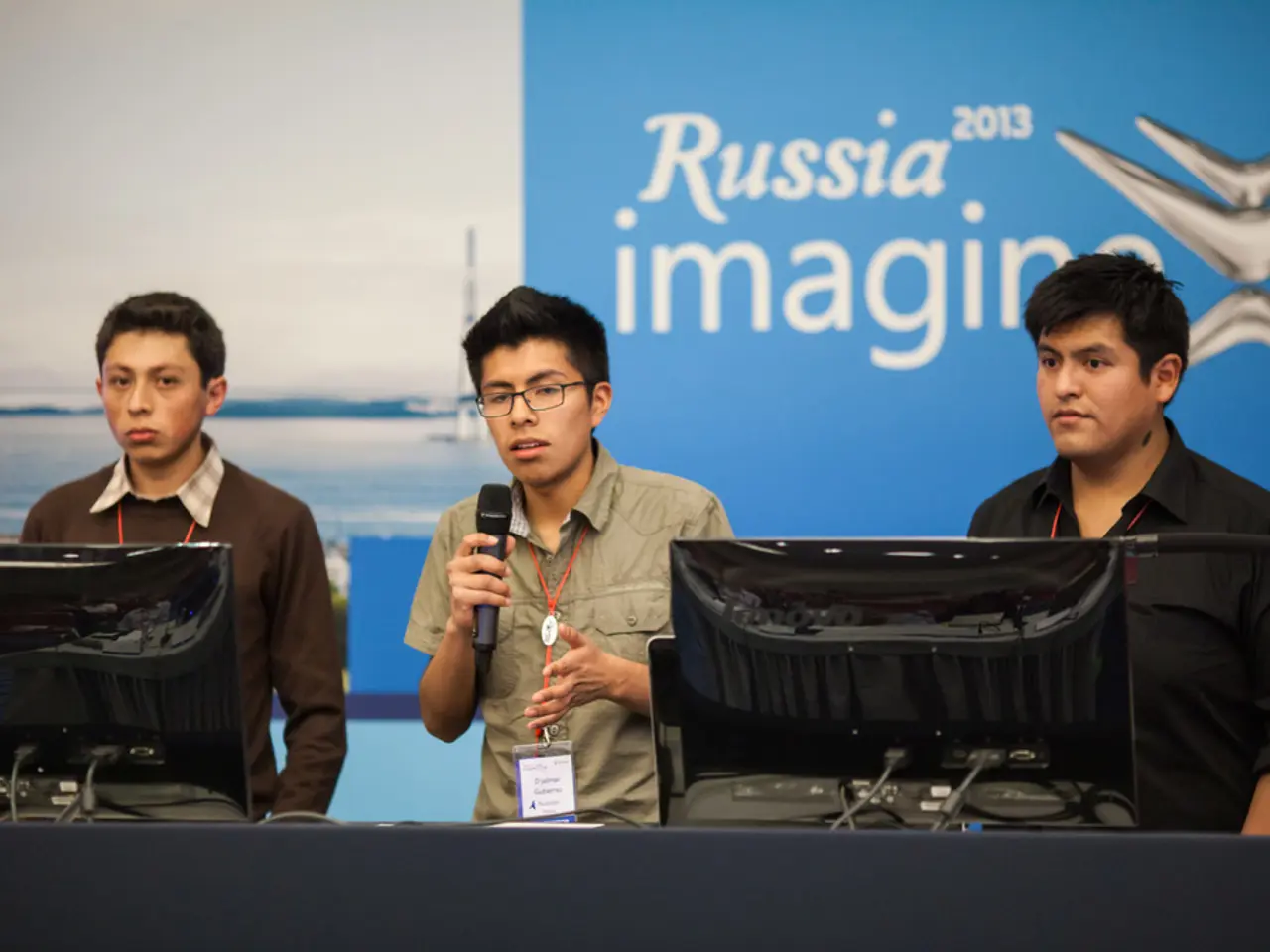Explore the methods Chinese entities are utilizing to repurpose multitudes of Nvidia's RTX 5090 GPUs into AI accelerators, despite Nvidia's inability to intervene.
A Chinese firm has found a clever workaround to U.S. export restrictions on high-end GPUs, converting NVIDIA's GeForce RTX 5090 gaming graphics cards into high-efficiency AI accelerators.
The conversion process involves a highly automated operation, with robotic arms removing components, pick-and-place machines positioning chips on new boards, automated soldering stations for electrical connections, and quality-control cameras ensuring consistent build quality. The modified cards are then fitted with blower-style cooling systems suitable for server environments, effectively transforming gaming GPUs into server-grade AI accelerators.
The enterprise is notable due to its large scale and the volume of RTX 5090 cards being processed. A video of the conversion process, available on Bilibili, showcases a large-scale operation that suggests a strong demand for AI accelerators built from repurposed RTX 5090 cards.
The process begins by removing GB202 chips and memory modules from gaming boards, and transferring them onto custom two-slot PCBs optimized for AI workloads. By shifting the GPUs onto slimline, server-compatible boards, Chinese firms are effectively creating their own high-end AI accelerators. The redesigned blower cards have the power input shifted to the tail end of the PCB, simplifying cable routing and reducing the risk of overheating.
For AI developers in China, repurposed RTX 5090 cards offer a way to obtain the computing power they need without relying on official supply channels. The conversion process bypasses export restrictions, allowing Chinese firms to utilize RTX 5090 cards despite the lack of an officially released 5090D variant designed to comply with U.S. sanctions.
The implications of this workaround are significant for current export controls. It exposes the limitations of export restrictions that target finished AI accelerators and fail to account for component-level repurposing. Because these automated reassembly lines transform restricted gaming GPUs into AI-optimized hardware after import, global policymakers face challenges in enforcing effective controls. This situation may compel a reassessment of export control frameworks, considering the technical ingenuity and industrial scale of such modifications, especially as AI capabilities become a strategic priority worldwide.
In summary, Chinese firms are exploiting the modular nature of the RTX 5090 by repurposing its core chips through automated industrial processes to create AI accelerators. This method directly undermines the efficacy of export controls aimed at containing advanced AI hardware proliferation, raising complex regulatory and strategic questions globally.
- This transformative process not only includes the use of gaming GPUs, such as the NVIDIA's GeForce RTX 5090, but also encompasses data-and-cloud-computing technology, as these converted cards are being utilized as high-efficiency AI accelerators.
- The conversion process delves into various aspects of technology, employing robotic arms, pick-and-place machines, automated soldering stations, and quality-control cameras to restructure gaming gadgets like the RTX 5090 cards, thereby demonstrating advanced technological capabilities.
- The enterprise's focus on smartphones could potentially benefit from this innovative technique, as the redesigned blower cards, with their power input shifted for server compatibility, could potentially be adapted for use in high-performance mobile devices, blurring the lines between gaming, computing, and mobile technology.




